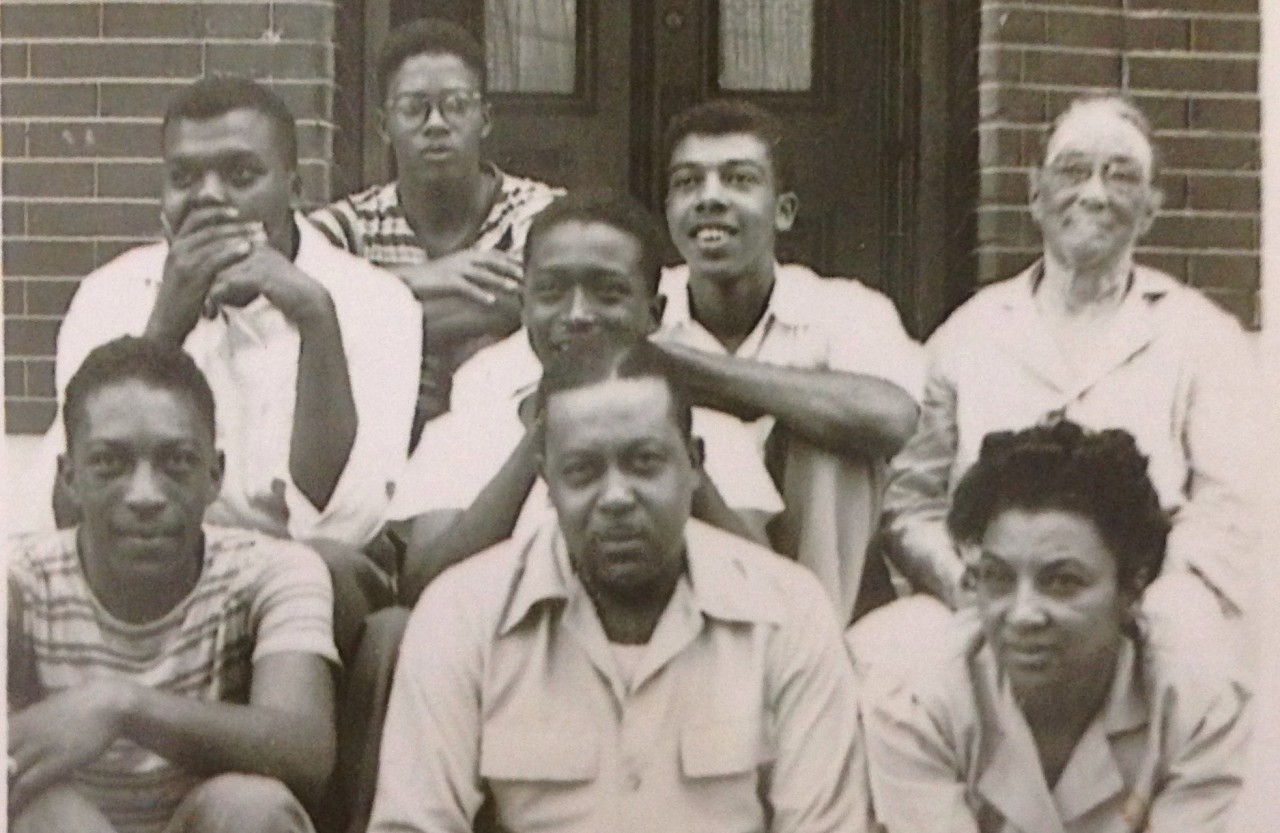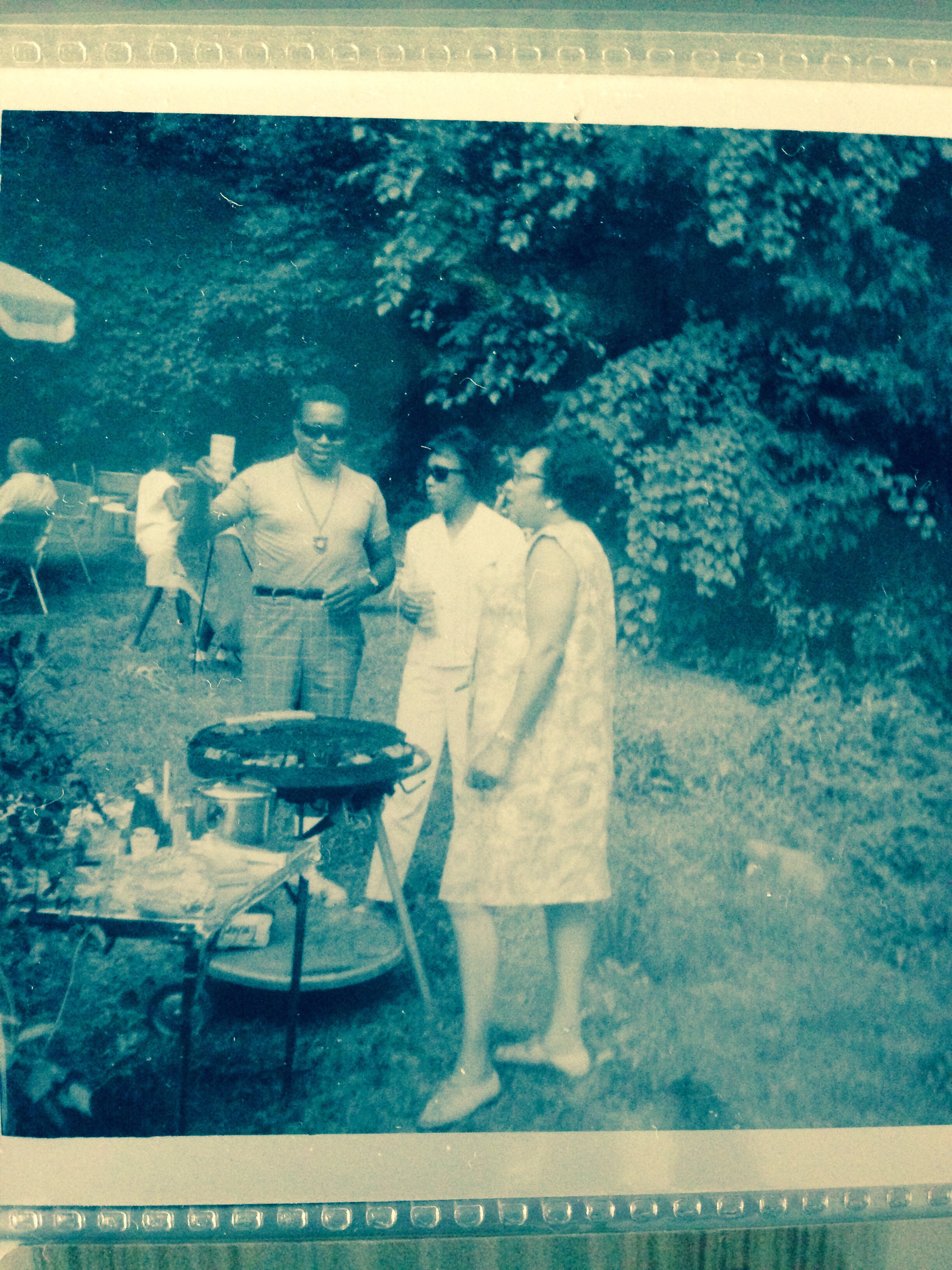My stepmother thought I wasn’t Black enough. In truth, she would never have approved of me. She had two of her own daughters. She wanted a husband, not another daughter. Everything about me was wrong, starting with my education.
While my mother was alive, I attended private school. These schools were majority-White and didn’t teach Black History at the time. Public schools didn’t teach Black History, either. I learned about the Civil Rights Movement by being alive. I was too young to participate, but I saw photos and TV even before I could read. I listened. As an only child, I got plenty of exposure to adults who talked about Civil Rights and current events every day. I was an avid reader who learned about George Washington Carver and Harriet Tubman on my own. I read, but did not talk about Black History. Outwardly, I never had the veneer of popular Black Culture to match my adult stepsisters. My stepmother saw an opportunity.
When Alex Haley’s book, Roots, aired as a mini series on TV, it was a sensation for the Black community in the USA. I watched the mini series. Afterward, I was allowed to read the book. My stepmother meant the TV show and book to be a lesson in How to Be Black.
That same year, my father and I accompanied my stepmother to a special meeting of her choir or a social group. The meeting was held at a member’s home, to commemorate MLK,Jr.’s birthday or Black History Month. I was the only teenager present in a room of adults who middle-aged or older. The choir sang “Swing Low, Sweet Chariot”, and other spirituals. We were offered a meal of Soul Food. I don’t remember everything that was on the buffet. I lean strongly toward vegetarian dishes. This particular meal was laced with pork and pork fat. I didn’t eat much. The one dish I remember was cracklin’ cornbread. I’d read about this and looked forward to trying it, since my family did not serve it. What a disappointment! I got a square of cornbread loaded with one-inch cubes of pork fat. There was no way I was going to eat that. I didn’t eat much that entire evening. I got nothing out of my stepmother’s efforts at a punitive education. FYI, I’ve always been Black. I’m just not Black the way my stepmother wanted.
This morning, I happened to see a cooking show that brought all these memories back to me. The chef, Kevin Belton, discussed cracklins and demonstrated the final step in how to prepare them. Cracklins are rendered, fried pieces of pig skin, with some fat and maybe meat attached. They are a byproduct from when a hog is butchered.
Historically, farm families kept a hog that would be butchered when the weather got cold enough to store the meat safely. Every bit of the pig could be eaten, no waste. Hams and bacon could be smoked. Other parts could be salted. Some meat was eaten fresh. Scraps were made into sausage. Fat, including the skin, was rendered into lard. Cracklins were the crispy bits of skin leftover when pork fat was rendered into lard. The crispy bits were skimmed out of the lard pot and saved. Some cracklins were set aside to bake into cornbread. Some were seasoned and eaten as a treat at the time of the butchering.
Most people no longer raise and butcher the meat they eat. Properly made cracklins need to have their fat rendered out at low temperature, then get crisped by a second fry at a high temperature. Nowadays, most people buy cooked cracklins at a butcher shop if they are available. You can also buy chicharrones or fried pork rinds, which are the pork skin without fat. I’ve even seen a vegan product offered.
While I was searching for information on the cracklins I saw cooked on TV, I came across some general information. Cracklins are very popular and sold freshly fried, in Louisiana. They are well known in North Carolina, too. They should be known in any area where people raised and butchered hogs on small farms.
There are different variations on cracklins, too. I was served cornbread with big chunks of fat. Those cracklins had not been rendered down and crisped. There is another type of cracklin that is cut into thin strips that are rendered and fried. Those small pieces get brown and very crisp. I also saw mention of cracklin crumbs, which sound like another good choice. Even after seeing photos of properly cooked cracklins, they aren’t for me. I’m never eating them again.
There is a modern version of cracklin cornbread that I WOULD eat. This modern cornbread contains chopped bits of crisply cooked bacon or bacon bits. A vegetarian version could use vegan bacon bits. Even better.
The vegetarian cracklin cornbread would horrify my stepmother. She hated my aversion to meat and believed that eating red meat was essential to a healthy diet. She felt that I should be forced to conform to her idea of a Black child.
I took my own messages from my stepmother’s lessons. I’m never going to be much of a meat eater. I truly do not like most meat and abhor meat fat. My elders grew up in culture that valued pork as a staple food. The entire animal was eaten, with no waste. I can appreciate that without having to eat much pork myself.
I don’t have to sing spirituals to appreciate Black music.
I learned the most from reading Roots. Alex Haley’s book taught me that it is possible for Black people to research their family history and reconstruct personal family trees. We know now that Haley fictionalized some of his story. His work is still instructive and inspiring.
I have a maternal DNA match that is a direct ancestor of Kunta Kinte. I hope to find our common relation so I can add Alex Haley and Kunta Kinte to my family tree. That’s the best lesson of all.




 I grew up attending cookouts. If it rained, we had an indoor picnic. You can have a cookout anywhere you like. You can host a cookout by lighting a fire in a grill and fixing any kind of food that you choose. Don’t ever confuse a cookout with a barbecue. They are not same. In the South, at least, you need to let your guests know what to expect.
I grew up attending cookouts. If it rained, we had an indoor picnic. You can have a cookout anywhere you like. You can host a cookout by lighting a fire in a grill and fixing any kind of food that you choose. Don’t ever confuse a cookout with a barbecue. They are not same. In the South, at least, you need to let your guests know what to expect.
 Most of my life, I have celebrated Christmas a certain way. We did it properly, like good Episcopalians. That meant I helped my father green the church. After his death, I had my own Advent wreath at home. Since my parents and most of their friends worked in the school system, they had Christmas Eve off. My mother always held a brunch on Christmas Eve morning. Our guests were always Grandmother Mable and Grandfather Bruce, and Mr. and Mrs. Watts. We might also have various other guests, but those four attended every year. Since it was Christmas Eve, I remember being wildly excited and likely driving all the adults nuts. At the time, I could not have cared less about the food. I do know that Mom served up waffles, with bacon and sausages and eggs and maybe citrus fruit. The adults drank lots of coffee, but no alcohol. Christmas Eve was a busy day of preparation.
Most of my life, I have celebrated Christmas a certain way. We did it properly, like good Episcopalians. That meant I helped my father green the church. After his death, I had my own Advent wreath at home. Since my parents and most of their friends worked in the school system, they had Christmas Eve off. My mother always held a brunch on Christmas Eve morning. Our guests were always Grandmother Mable and Grandfather Bruce, and Mr. and Mrs. Watts. We might also have various other guests, but those four attended every year. Since it was Christmas Eve, I remember being wildly excited and likely driving all the adults nuts. At the time, I could not have cared less about the food. I do know that Mom served up waffles, with bacon and sausages and eggs and maybe citrus fruit. The adults drank lots of coffee, but no alcohol. Christmas Eve was a busy day of preparation. My Dad was extremely active in the Episcopal Church. When we lived in Baltimore, we were members of Holy Trinity. Dad was on the Vestry, a Lay Reader, and a Chalicist. That meant he was on duty for major holidays. On Christmas Eve, he would leave right after dinner, to open the church nd prepare for the early service. Some years, Mom and I would get dressed and he would return to pick us up for the service. Once I was old enough to express a preference (not long at all), Mom and I would skip the early service and attend the Carol Singing and Midnight Service. Some years we would attend both services and spend the whole evening at church. We aren’t done yet.
My Dad was extremely active in the Episcopal Church. When we lived in Baltimore, we were members of Holy Trinity. Dad was on the Vestry, a Lay Reader, and a Chalicist. That meant he was on duty for major holidays. On Christmas Eve, he would leave right after dinner, to open the church nd prepare for the early service. Some years, Mom and I would get dressed and he would return to pick us up for the service. Once I was old enough to express a preference (not long at all), Mom and I would skip the early service and attend the Carol Singing and Midnight Service. Some years we would attend both services and spend the whole evening at church. We aren’t done yet.